 45/72
45/72Table of Contents [Show]
Death Road to Canada Review
December 21st, 2020
Death Road to Canada is a modern, light-hearted take on the gritty party-management survival game Organ Trail, in which you travel from city to city, gather loot, manage your group, engage in combat, and partake in various events across the country. As the name suggests, the main goal is to travel from Florida to Canada within the preset amount of days set for you by the gamemode you choose, out of the 15 unlockable modes available.
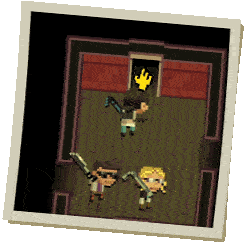
Each run is started by picking a random (or preset) character and companion, then choosing your preferred mode of play. This mode will affect trip length, zombie spawns, and character encounters later in the game. Your chosen characters start with random stats (most of which are intentionally hidden) and two traits that further change starting gear, sometimes granting special dialogue options in various different scenarios.
One unique facet of this game allows you to create a roster of custom characters to come to your aid throughout the run. I really appreciate this feature. You can recreate real life friends, celebrities, or videogame / movie characters, making for a very entertaining and welcome surprise once you do end up meeting them. In Familiar Mode, preset characters are the only characters you find, which is great if you like yourself a somewhat curated game experience.
At the beginning of the run you're assigned a random vehicle, a couple random weapons, and a starting location which you can loot for supplies to help begin your journey. While the random location and vehicle you get don't make much of a difference, the random set of weapons can heavily influence how your game plays out, especially on harder difficulties. Therein lies the first major issue I have with this game - weapon durability.
Over 40% of all weapons in Death Road to Canada have a durability value that is solely based on random chance. The breaking percentage is usually anywhere between 2% to 5% and is applied every time the weapon is used. Put bluntly (no pun intended), your weapon has a chance to break every time you hit something with it, that's including walls and furniture. This may never happen throughout your journey, or happen on your very first raid.
Most breakable weapons are wooden, or look "improvised" in nature, but there really is never any tell which weapon will break and which one won't, apart from visiting the Wiki. For example, baseball and cricket bats can break, so can katanas and machetes; but a hammer won't, neither will an axe or a guitar. Not only does this not make sense, this kind of RNG leads to frustrating situations more so than to enjoyably tense ones.
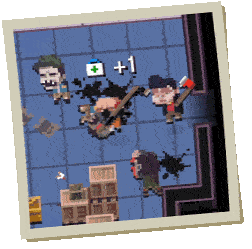
You are compelled to carry gear you don't really need "just in case". Characters only have three carry slots, which doesn't leave much space for new loot - since you will also be carrying a sidearm or a flashlight depending on the situation.
Unbreakable weapons are usually either trait / character specific, can only be obtained through special events, or are very expensive to purchase. That said, some characters start with an unbreakable weapon through a randomly generated trait (or through the sheer will of RNG), which becomes very valuable.
Another thing I dislike about the melee system is the Extra Hit stat. Most weapons swing in an arc that is the same size regardless of how large the weapon is. What players do not initially know is that the amount of zombies getting hit by that arc is directly influenced by a weapon stat the game never discloses. This makes melee weapons feel inconsistent. Worse yet, hitting multiple targets is based on random chance, yet again having RNG make decisions that should've otherwise been left up to deliberate player choice (or skill).
Ranged combat is very simplistic. You cannot aim guns manually, once you equip the weapon the target is picked for you automatically by the AI. You also never need to reload, characters will simply continue shooting for as long as there is ammo in their reserves. The speed at which the AI acquires targets and how effective the weapon is in terms of damage and recoil is not determined by the player or even the weapon itself, but rather by Shooting - a dump stat which is usually left behind in favor of better stats like Strength or Fitness.
Moreover, ranged weapons don't necessarily kill in one shot, while melee weapons usually do and don't rely on ammo to do so. There are three types of ammo; finding the right ranged weapon with just enough ammo is already hard enough, and that's not to speak of making a character good enough of a shooter to be able to use it. The only real choice made by the player here is whether or not to actually engage in ranged combat to begin with.

There is unfortunately zero incentive to fight zombies in this zombie-centric game. There is no zombie loot, and no XP system to level up skills through combat. Characters are able to level up only through Sieges, that either happen once your party is large enough, once you've lost your car, or simply every few in-game days (with the last two days being Sieges guaranteed).
The random raid generation leaves a lot to be desired. Many of the same building layout are scattered throughout, with room entrances often lazily barricaded to bar player entry. Furniture placement inside accessible rooms almost never makes sense; the loot you gain by exploring said rooms is also lackluster, yielding negligible amounts of bullets, gas, or medical supplies.
Since your party is comprised of AI-controlled characters, you will find yourself wrestling with it when fighting, retreating, and picking up items. For example, because the AI follows the party leader so closely behind, entering a room to scan it, then quickly retreat back into the hallway is made a struggle. You can enter a room, see that it is swarming with zombies, then be unable to step out of it, as three other party members now block the entrance.
Avoiding furniture while making your way to the exit is also made difficult because the pathfinding of the AI sucks. It pushes and moves furniture as it jogs alongside you, either getting itself or you stuck. The pickup priority for the AI doesn't make any sense; it will almost always prefer to use weak or fragile weapons it finds on the ground, rather than the ones you specifically chose for it when planning the raid.
You can lock a weapon slot in place to prevent this, but then random trash around the level gets picked up anyway, forcing you to micromanage it either in-raid (by taking direct control of the character), or post-raid, once three cardboard tubes, two umbrellas, a boot, and a purse get dumped into your trunk automatically.
Rare characters almost never use their other signature weapon. Characters that are focused on unarmed combat will still pick up and utilize melee weapons; they won't pick up and throw objects or zombies, despite the game revolving around that mechanic. They also don't know how to throw explosives, although I admit that this is probably for the best.
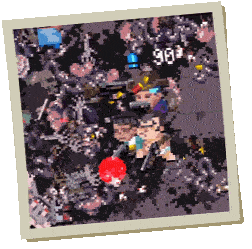
If AI Tactic is set to 'Defend' or 'Fight', it will over-commit and take unnecessary damage fighting on its own; you can circumvent this by setting Tactic to 'Run' briefly, which makes the character drop what they're doing and run to you, but having to momentarily pause the game to do so is annoying.
If the AI is allowed to shoot, it will only switch to the ranged weapon once it drains its stamina bar, and will then not stop shooting until it depletes its entire ammo reserve.
So, if not fighting or looting, what is there left to this game? Well, currently, the most prominent and attractive feature of Death Road to Canada, to which combat and exploration unfortunately only serve as filler, is random road events. In fact, they are the sole reason this review is a recommendation, since the core game loop felt very dull and boring to me.
Witnessing and partaking in events is done through text between your destinations. There are a LOT of random events, all of which are very quirky and entertaining. Some scenarios are utterly ridiculous, and the party often has very creative ways and means to deal with them. Sometimes the CD player in the car breaks and someone has to fix it. Sometimes someone farts or can't sneeze and needs help from other party members. Sometimes someone has a terrible toothache, or tells an especially entertaining story that boosts everyone's morale.
Things are often lost or found between car cushions; annoying survivors can be encountered, asking to rant or compete in drag races, lifting competitions with your characters. Apart from that you will oftentimes decide where to camp, how to ration your food, where to explore, what to craft or who to help in certain situations. These events challenge your decision-making capabilities and test your knowledge of the game's mechanics thus far.
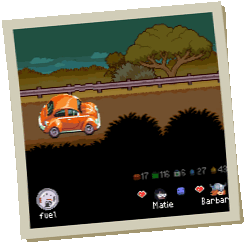
Written text is read out loud through bleeps and bloops, giving the game a very cartoonish and easygoing vibe. Textboxes highlight certain words or key phrases with a rainbow pattern, emphasizing parts that are especially whacky or random.
Characters will communicate with eachother throughout the ride without player intervention, making for some highly entertaining exchanges. Low-witted characters can simply ignore problems, while annoying characters can make problems worse. They have different dialogue options and responses based on stats, giving each character a consistent personality.
Location scenarios are really quite fun. Characters may come across spooky mansions filled with ghosts, UFO crash sites filled with aliens, overrun farms filled with barn animals which they can then recruit to fight for them.
Military bunkers filled with deadly equipment, gnomes offering the party rewards for completing challenges, bodybuilders engaging in flexing competitions, toilet genies stuck in their toilet prisons, and many other weird interactions with the party that will leave you completely dumbfounded.
You slash, shoot and loot your way through apartment complexes, malls, pet stores, hospitals, bars, graveyards, sewer tunnels, police stations, car garages and much, much more. Locations present different choices for the player to make, with special options being provided by having more party members, ones with specific personality traits, or ones that are sufficient enough at a particular set of skills.
The music playing in the background - as the characters bloody themselves with the guts and entrails of the undead - is very cheerful and uncharacteristic for a game of this setting, making the experience that much better.
The meta-progression in this game is admittedly weak. You can randomly find 'Zombo Points' as loot, or by recruiting characters, leveling skills up, and surviving Sieges in any given run. There is a preset cap to the amount of points you can get, which you can increase by spending those points. The points are mainly used to unlock new traits and upgrade existing ones in the world hub.
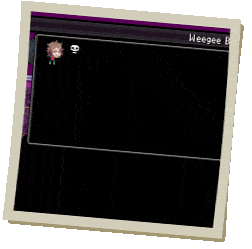
Simply put, most unlockable traits are bad. The ones you start out with usually don't have drawbacks, while the unlockable ones do. It feels like shooting yourself in the foot - that is, allowing the random generator to utilize traits you don't want for new survivors you meet from that point onwards.
I started playing this game before the meta-progression was introduced into it, and it feels like an afterthought to this very day. Also, having to enter the hub from the main menu, separate from the new run and custom character options, then navigating to and talking to different characters for these unlocks feels a bit tedious to me.
I understand not many will appreciate the childish humor or pop-culture references, the game can admittedly get cringeworthy at times. Yet, I feel it hits the mark with its cheerful presentation somehow, despite lacking in sound mechanical design.
Between "unfortunate" events the game forces upon you, it has you making decisions that impact the outcome of the trip - choosing which party member to keep or kick out, which location to visit, who and what to take into each raid, who to put in charge of which task, what skills to level up and what equipment to purchase, and more.
Had the combat system been fleshed out, the game would've been an easy recommendation from me; as it stands, I can only recommend it to experience the random events alone.